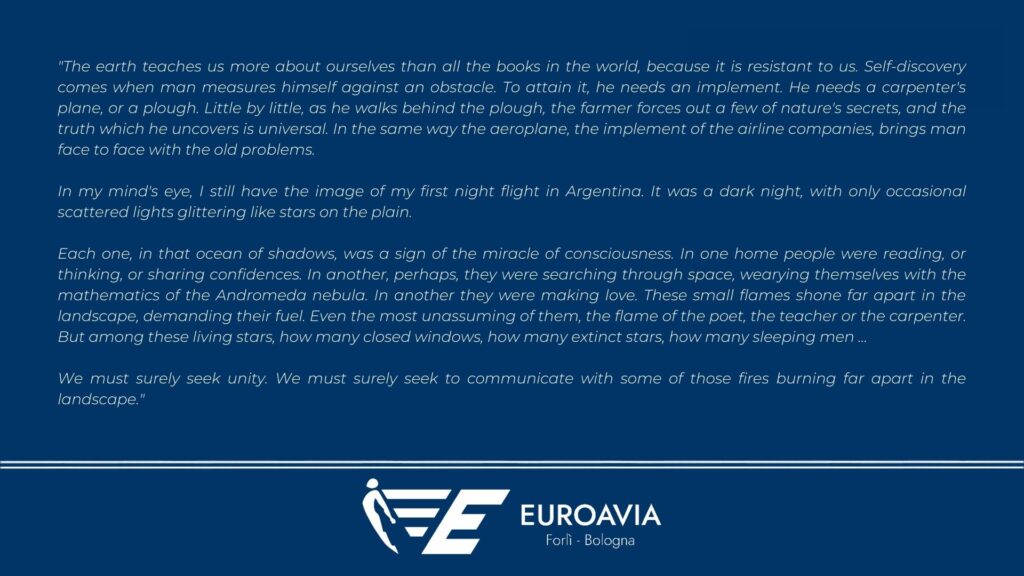There was a time when the term Aviation was synonymous to bravery and Aviators were the greatest heroes of that era. In the tremulous times between the two World Wars, these men were opening new routes in the harshest regions known on Earth: from Paris to Buenos Aires and from New York to Río Grande across the blusterous Atlantic Ocean, through the freezing “Cordillera de los Andes” and over the vast and empty Sahara Desert. The common factor between these men and their machines was the deep bond laid down: a mutual relationship, symbiotic in some ways, keeping both alive.
“Wind, Sand and Stars” (Terre des hommes), written by Antoine de Saints-Exupéry, is his aviator logbook during his years as an airline pilot in the company Latécoère. Frequently alone up in the sky, lashed by sand storms on the ground, sometimes deceived by winds, the Aviator bestows us with the most compelling of all tales about the toughness and wonders of being human on the sorrows and the joys of life.
Thus, “Wind, Sand and Stars” is both a gripping tale of adventure and a poetic meditation on humankind. By interweaving encounters with nomadic Arabs and other adventures into a richly textured autobiographical narrative, it reaches its climax with the extraordinary story of Saint-Exupéry’s crash in the Libyan Desert in 1936 and his miraculous survival.
To conclude, I would like to cite the beautiful summary given by Sam Jordison from the Guardian on purpose of reading this book:
“This book is of deep significance to anyone who has benefited from air travel – and that’s everyone. […] He is just someone who pulled on a leather flying jacket, climbed into the exposed cockpit of a flimsy plane, got its propellers roaring and pointed its nose into the vast blackness of the night sky: his future, our present.”


